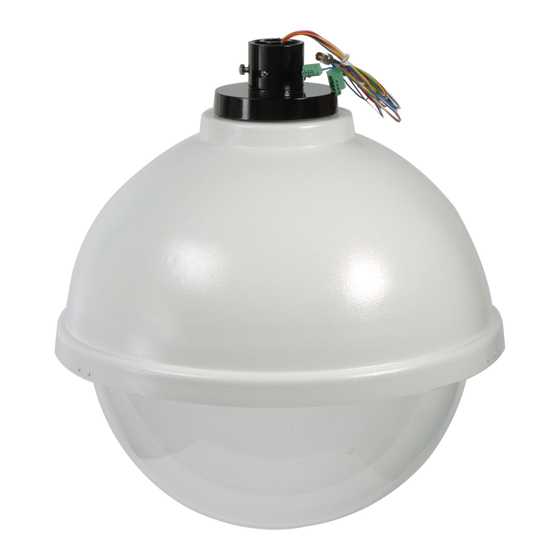Summary of Contents for Sony BRCSDP16
- Page 1 Installation and Operation Instructions for the following model: BRCSDP16 OUTDOOR AND INDOOR DOME HOUSING CONTENT OF BOX: (1) Housing (1) Supplied Parts (1) Power Connector (Heater/blower) (1) Toolhead Driver (1) Operation Instruction Manual 81-IN6584 03082011...
-
Page 2: Electrical Specifications
Power 24 VAC, Class 2 Only loosening the (3) captive security screws located on the housing ring next to the lower clear dome (Figure 2). For BRCSDP16 53 watts at 24 VAC (heater and blower) 30 watts at 24 VAC (camera) - Page 3 If you wish to provide a single power transformer it is WIRING recommended that: 1. Be certain that you know the total power consumption of WIRING INSTRUCTIONS (OUTSIDE OF HOUSING) the housing Heater (25 watts) + Blower (1 watt) + camera pan/tilt (25 watts).
-
Page 4: Installing The Camera
INSTALLING THE CAMERA Install the Sony BRC700 pan/tilt onto the quick release Place the Sony BRC700 pan/tilt and quick release bracket in bracket using the (2) screws and washers provided with the the housing, sliding the three open screw slots over the screws camera (Figure 4). -
Page 5: Important Safeguards
These Installation and Operating Instructions. SERVICE If technical support or service is needed, contact Sony at the following number: TECHNICAL SUPPORT 8:15AM to 7:30PM (Eastern Time) - Page 6 This “line” serves as the geometric center line used to insure proper camera placement. It is not typically seen by the camera. However, Sony RZ series PTZ cameras are able to tilt up above the horizon to 25°, this wide range of tilt motion at a wide angle view may cause this line to be captured in the image.











